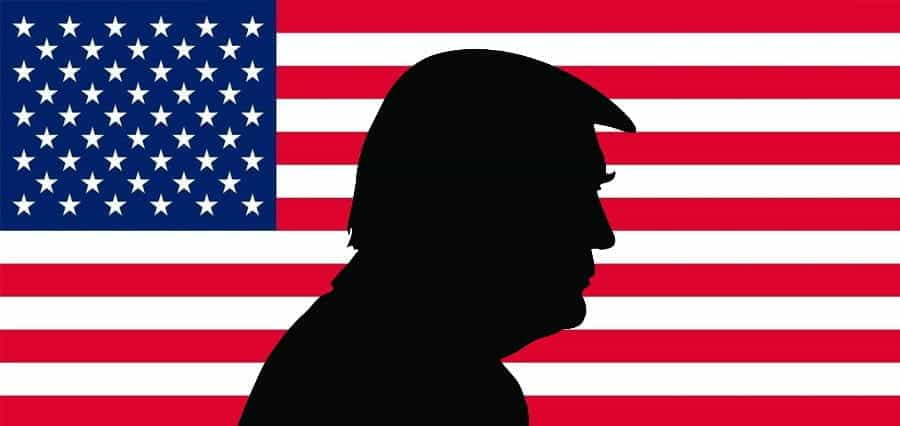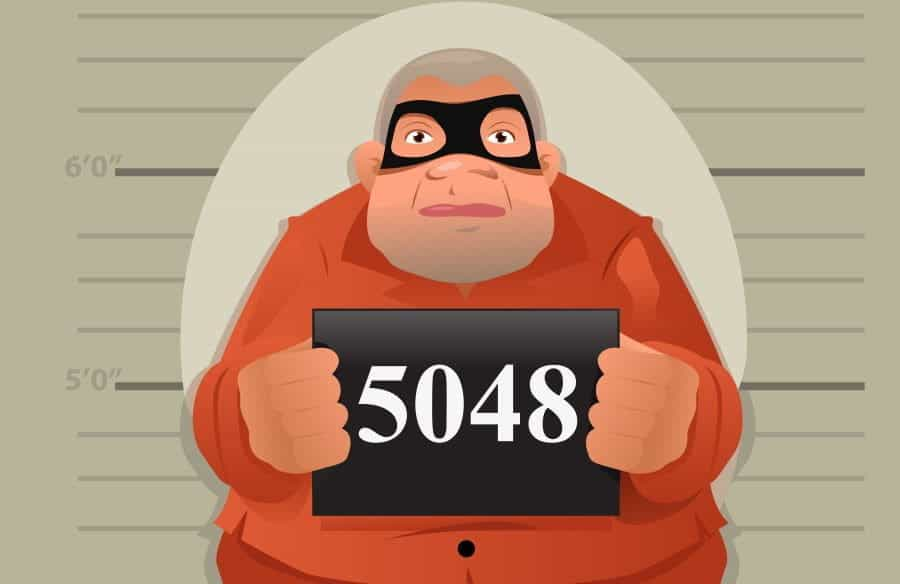
It Started with a Bang
In the early 1980s, Donald J. Trump was a big star in the casino sphere of New Jersey’s very own Atlantic City. Casting a large shadow in the gambling industry, Trump’s casinos in Atlantic City contributed nearly a third of the city’s entire gambling revenue.
If that wasn’t enough, his casino and real estate portfolio in Atlantic City directly employed over 8,000 of its citizens. When the Trump Taj Mahal was first built in 1990, it was the biggest, brashest casino in the world. Boasting a 42-story story, the Trump Taj Mahal wasn’t just New Jersey’s tallest building, but it was the world’s largest casino also.
Renowned for its exquisite glamor, the ‘eighth wonder of the world’ was host to over 3,000 slot machines, world-class gourmet chefs, dozens of luxurious restaurants, and crystal chandeliers scattered throughout that were worth $15 million alone. If that wasn’t subtle enough, the staff were even forced to wear turbans garbed with real ostrich feathers.
It Ended with a Whimper
Despite this excessive extravagance, Trump and the Federal Authorities would come to the eventual realization that not all that glitters is gold. Building up ever-larger mountains and mountains of debt, the Trump Taj Mahal casino would eventually bring intense federal investigations, record-breaking fines, and multiple bankruptcies.
At one stage, the New York Times even calculated that the casino would need to make $1.3 million a day just to cover all of its debts. With its financial handlings in complete disarray, it wasn’t long before the Financial Crimes Enforcement Network (FinCEN) cast its all-seeing eye to the whole affair and brought the whole house of cards crumbling down.
After the final Trump casino bankruptcy, the Taj Mahal would see its assets go for a slim fraction of what they were originally bought for. The once grandiose Austrian crystal chandeliers, poker tables, and even the lavish lamps would all end up on the auction block in a desperate attempt to pay back debtors.
The Late Wonder of the World
As a result of increasing pressure, Trump eventually took his leave of Atlantic City in 2009, after which the billionaire Carl Icahn took over the keys to the Trump Taj Mahal Casino and attempted to save it from the brink of collapse. However, it would prove to be too much of a burden even for a billionaire and in February 2017, the casino officially died.
Afterwards, Hard Rock International purchased the building for $300 million and reopened it as the Hard Rock Hotel & Casino Atlantic City back in 2018. This might be a lot to take in, and you may be reading asking yourself, how could such a meteoric rise lead to such a catastrophic collapse?
In an interview, Icahn himself stated that he had lost millions on this cursed business endeavor. So where exactly did the Trump Taj Majal Casino go wrong? What did it fail to do to keep the Feds and debt collectors away from its doors?
Throughout the upcoming sections, we will spell out how this entire casino venture was doomed from the very beginning and how recklessness and a complete disregard for the law would combine to act as a magnet for money laundering and fraud which would signal the casino’s inevitable demise.
Doomed from the Start
Like all casinos, the Trump Taj Mahal had a legal responsibility to prevent money laundering. After several federal investigations, the authorities discovered a plethora of disconcerting facts about how the casino operated.
From problems with slots machine accounting, to ‘willful and repeated’ violations of the Bank Secrecy Act, the Trump Taj Mahal was a hotbed for suspicious transactions and ‘failed to maintain effective anti-money laundering measures’ at every turn. Staff also failed to keep appropriate records of the resort’s currency transactions, adding to the overall lack of transparency.
In the eyes of Uncle Sam, how the biggest, brashest casino in the world was operating was essentially an open invitation for fraud. So how do we know money laundering occurred?
The House Always Wins
If you ever find yourself running a casino, bear in mind that all transactions over $10,000 have to be recorded alongside a name, address, and time in case the authorities ever need to see this information. By keeping the books clear, you can help prevent crime and money laundering (making dirty money clean),
For instance, if a casino isn’t doing good bookkeeping, there’s nothing to stop somebody with dirty money buying $10,000 worth of chips, not playing them, and cashing them out to get ‘clean’ money from the casino by claiming they were legitimate winnings. With the Trump Taj Mahal, authorities found that the casino violated bookkeeping rules 106 times within the first two years.
Causes for Concern
Despite its high visibility, the New Jersey Casino Control Commission begun to cast a watchful eye over the Trump Taj Mahal’s performance because of the rapidly rising costs and were considering rescinding its gaming license. Initially, Trump was able to sweet talk them and promised to rein his expenses in.
Within a few months, however, Trump had acquired a total debt of the Taj Mahal that amounted to $820 million and it seemed unfathomable that he could recover. By the end of 1991, the casino filed for its first bankruptcy with Trump giving away 50% of his stakes to bondholders to absolve his debts. Although, he did manage to keep a managerial role over the casino.
According to some FBI stories, the casino also became a hotspot for the Russian mob, who would bet large amounts of cash there. This, along with the shoddy bookkeeping practices, paved the way for the first federal fine that the casino would receive.
First Fine
In many ways, the fines that the Trump Taj Mahal received were groundbreaking. In the 1990s, the only casino in Atlantic City to fail consistently at anti-money laundering measures was the Taj Mahal. Due to its lack of transparency and for endangering the livelihoods of its workers, the US Treasury Department issued the casino with a whopping $477,000 fine in 1998, an unprecedented figure at the time.
While the casino resort itself denied any evidence of money laundering in their establishment at this time, the Trump Taj Mahal agreed to pay the penalty for breaking the Bank Secrecy Act. While this story caused a media circus, it would pale in comparison to the second fine that was to follow several years later in 2015.
Piling on the Pressure
Five years later in 2003, FinCEN investigators would find repeat violations of the Bank Secrecy Act and begun to pile on the pressure. It should also be noted that despite its multiple bankruptcies, Trump was still making money at this time from the casino. In the Trump Taj Mahal’s contract, there existed a clause that the Trump organization had to be offered all contracting jobs first.
However, even if they turned down a project they could still get paid. In 2007, the casino gets an official stern warning about its practices yet didn’t take adequate steps to fix the problems. While it may have kept the beast from the door momentarily, it would all prove too much for the Trump Taj Mahal in the end and the casino would end up in seriously hot water.
By 2010-2012, the Trump Taj Mahal was filing less than half of the reports legally required. In 2009, the casino filed for bankruptcy for the fourth time and Trump himself stood down as a member of the board. By 2012, investigators from the US Treasury Department were watching the casino like a hawk.
Additionally, there were also rampant fraud cases all across New Jersey in this period. Individuals from New York were committing elaborate bank fraud by stealing money from people’s bank accounts and using casinos to launder the money in Atlantic City.
Remarkably, it was the banks that alerted the police to the bank fraud scheme, not the Taj Mahal. All at the same time that the Treasury was looking into the casino!
Chapter 11 Bankruptcy
As a quick side note, we feel that it’s necessary to briefly describe what chapter 11 bankruptcy is and how the Trump Taj Mahal used it to stay afloat during such a turbulent time. In total, Donald Trump has filed for Chapter 11 bankruptcy six times for various companies. This bankruptcy type allows a company to remain in business whilst under the supervision of a bankruptcy court who will reorganize the business accordingly to appease creditors and buy some time.
Second Time, Second Fine
In the end, the Trump casino scandal would prove to be too much and in 2015, both FinCEN and IRS investigators found irrefutable evidence of wrongdoing by the Trump Taj Mahal. The casino had no choice but to willfully admit to multiple violations of the Bank Secrecy Act. As a result, the casino was slapped with a record-breaking $10 million fine for failing to combat money laundering on its premises.
By this time, however, Trump went from a man who controlled the casino to a franchisee who earned a small slice of profits for lending his brand name to the casino. In 2015, four months after an unparalleled fine in American history, Trump announced his bid for President of the United States.
You read that right! Four months before running for President, Trump was still making money from allowing a casino that had been under federal investigation to use his name. For the Trump Taj Mahal, and Icahn Enterprises (who would take over), this penalty would prove to be too much to handle and in February 2017 the casino was forced to close and sell off its assets during the liquidation process.
Just to Recap
We understand that this is undoubtedly an incredibly complicated story with many twists and turns of wrongdoing. For clarity’s sake, we’ve decided to outline the timeline of the ill-fated Trump Taj Mahal casino in the list below:
- 1991 – a year after it opens, Taj Mahal goes to bankruptcy court, Trump agrees to give away his 50% stake in return for lower interest rates from lenders
- 1998– Trump borrows money from a casino company to pay back bankers. Issued $477,000 fine
- 2004– Taj Mahal applies for bankruptcy for the third time. Trump steps down as chief executive but still remains in charge of the board
- 2009– Applies for bankruptcy for the fourth time. Trump quits the board, leaves Atlantic City
- 2014 – Trump Plaza is closed, sells casino to Icahn Enterprises
- 2015– Casino slapped with record breaking $10 million fine. Trump announces Presidency bid
- 2017– Trump Taj Mahal Casino closes its doors
Final Thoughts
With the power of hindsight, comes the power for consideration. While this casino scandal didn’t affect Trump too much in hindsight due to a lack of direct evidence implicating him, his reputation will forever be tainted with this Trump casino scandal in the public eye.
In the end, it seems that despite all of the peacock feathers and business posturing, Trump’s investments in Atlantic City only brought more trouble. If you’d like to learn about casinos that are actually successful and legitimate, check out some of the top online casinos in the USA, or some of our other in-depth guides for further insight!



